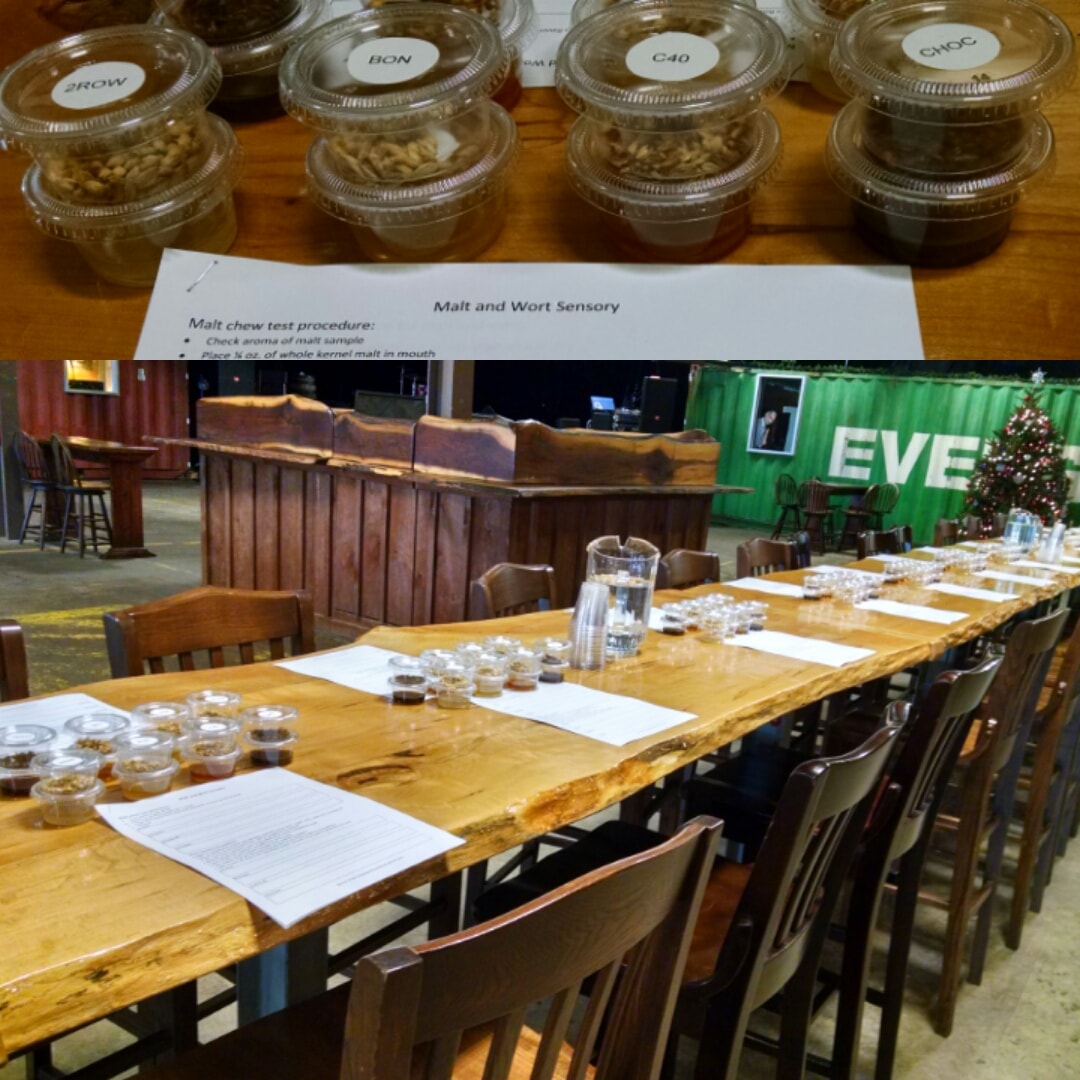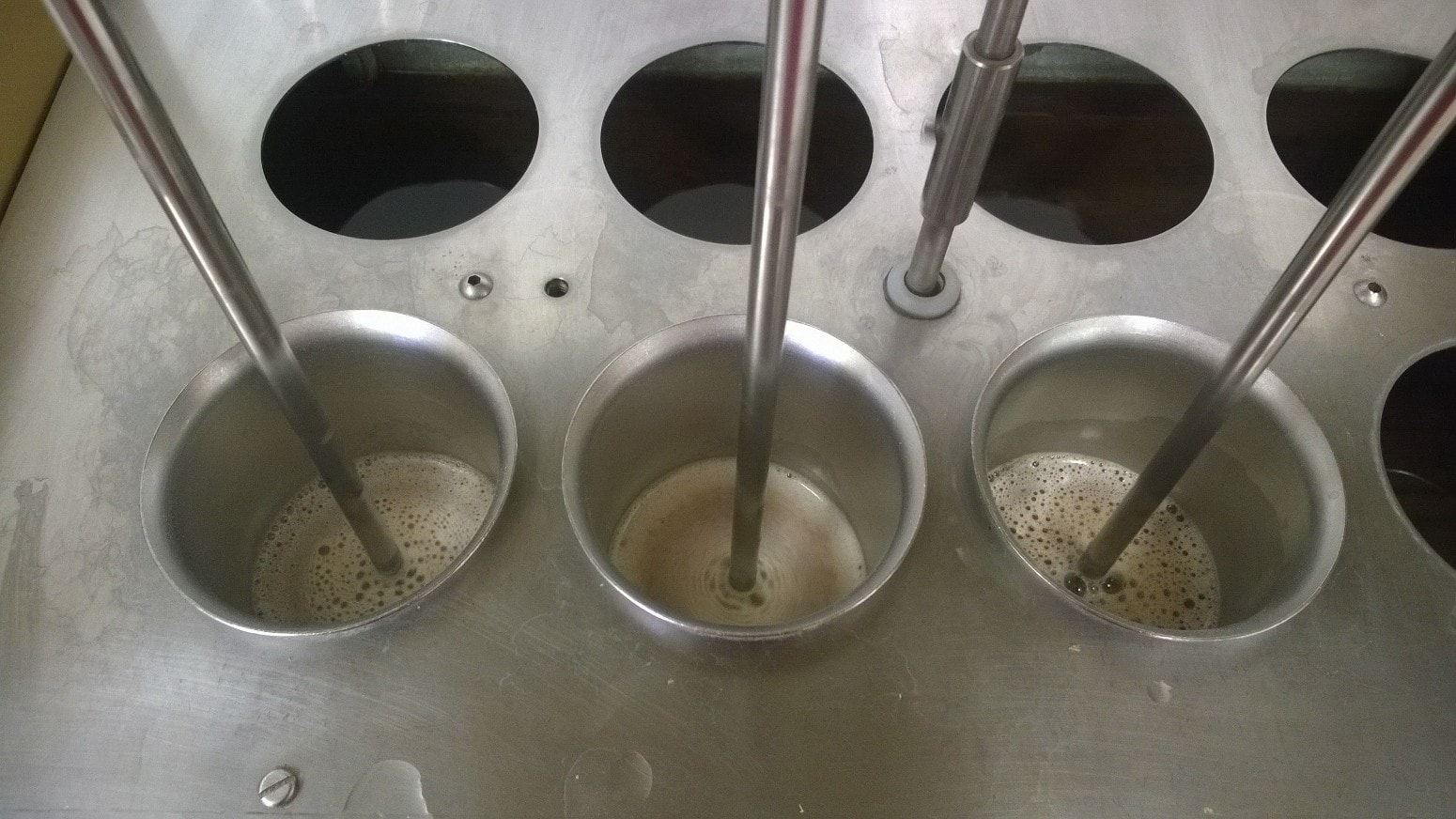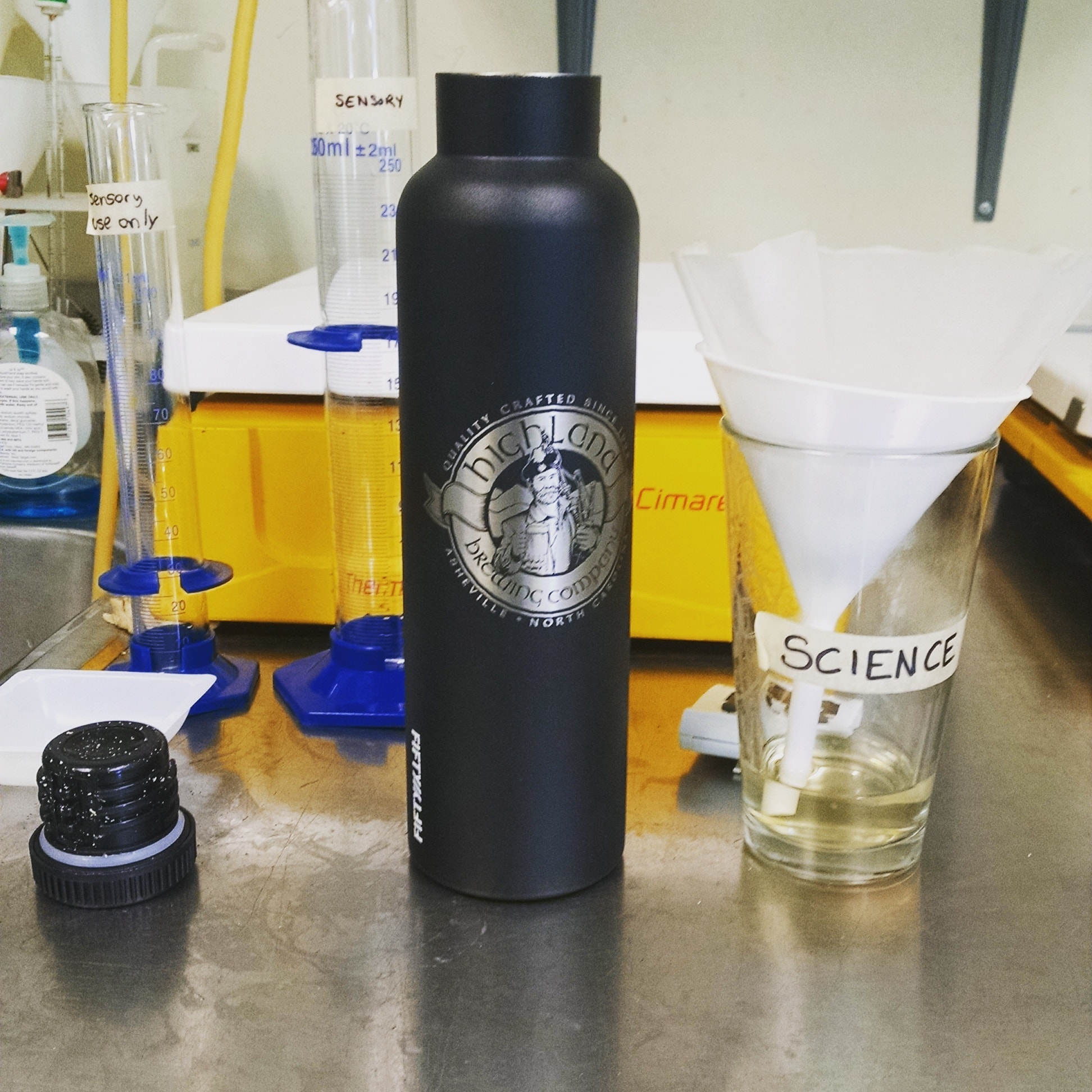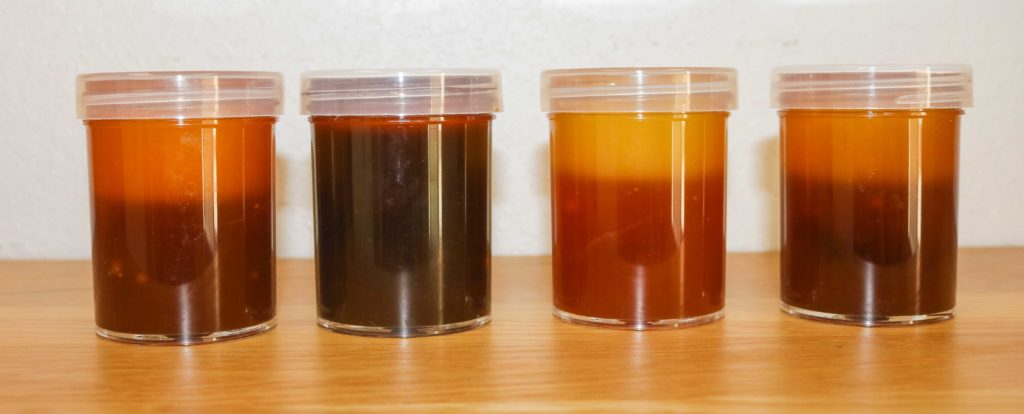Our December blog, Training Your Malt Senses, generated many requests from brewers and homebrewers to explain how we prepare wort for malt sensory analysis. In this blog, we will discuss several malt sensory methods, their intended applications, and give step-by-step instruction on how you can perform your own malt sensory at home or in your brewery.

Whole Kernel Chew
Chewing whole kernels is the simplest way to evaluate the sensory qualities of malt. However, whole kernel flavor is greatly influenced by the harsh, astringent husk and the starchy composition of the endosperm, resulting in a perception that does not accurately reflect the extractable malt flavors. For this reason, chewing whole kernel malt is not recommended for describing malt flavors, but rather for assessing the physical quality of malt texture.
Why is malt texture important? It can indicate whether or not malt has become slack, meaning it has picked up too much moisture from the environment during storage. Slack malt will be chewy rather than crunchy. It may not break up properly when milled, which can lead to a loss in extract.
Procedure: Place a small handful of whole kernel malt in your mouth and chew while considering the texture of the malt and the amount of force required to break the kernels.
The Congress Mash
The Congress Mash is an industry standard method of wort preparation (American Society of Brewing Chemists. Methods of Analysis Malt 4. Extract. 1958, rev. 1976, 1991, 2011). The method specifies grist particle size, liquor-to-grist ratio, temperature ramps and holds, and filtration technique. The wort produced from this mash is analyzed to determine malt extract, viscosity, color, beta-glucans, turbidity and soluble protein.
The Congress wort represents the extractable flavor potential of malt and is commonly used by maltsters for wort sensory. Unfortunately for brewers and homebrewers, the Congress Mash is not practical to perform without the use of an automated mash bath. For this reason, we will not go into further detail on how the Congress Mash is performed, but rather we will offer two alternate methods of wort preparation: The Single Step Infusion Mash and the Hot Steep.

Alternate Methods of Wort Preparation
The benefit of these alternate methods is that they require a relatively small amount of time and the cost of equipment is low. The Hot Steep method requires supplies that can be purchased from a general retailer while the Single Step Infusion Mash requires common laboratory equipment. The wort produced from these alternate methods will exhibit all of the flavors that are perceived in the Congress wort, but with very little contribution of sweetness by comparison. Currently, these methods are in the process of being validated by the ASBC Sensory Technical Subcommittee.
Single Step Infusion Mash – A laboratory method designed by the Briess Technical Experts
The Single Step Infusion mash was designed for sensory panels and brewers, but may be cost prohibitive for homebrewers to execute. When capabilities permit, this sensory method is ideal for evaluation of extractable malt flavors and aromas. (click here to skip to the Hot Steep Method, ideal for homebrewers).
Reagents
- Whole kernel malt
- Deionized water
Apparatus
- Stirring hot plate, capable of reaching and maintaining a temperature range of 60-65°C and stirring at a rate of 100 rpm
- Stir bar, magnetic
- Thermometer, standard, 0-200°C
- Funnels, large plastic
- Cling film, plastic
- Filter paper, No. 2 or equivalent
- Coffee mill, 200-watt with stainless-steel blades and lid activated safety switch (or equivalent)
- Glass beakers, minimum 600 mL and 1000 mL
- Graduated cylinder, capable of measuring 400 mL
- Mass balance, capable of weighing 50.00 g
The Single Step Infusion Mash Process
- Place 55 grams of malt in coffee mill.
- Close lid and grind for 30 seconds until malt is the consistency of flour (see Note 1).
- Weigh 50 ± 0.05 g malt flour in a 1000 mL glass beaker with a stir bar on a pre-heated stirring hot plate.
- Pour 400 mL of 65°C deionized water into the glass beaker and cover with a sheet of plastic cling film (See Note 2).
- Adjust setting to achieve a steady, moderate stir (approximately 100 rpm) and monitor that heat is maintained in the range of 60-65°C for 15 minutes.
- Remove stir bar and pour entire contents of mash liquid through filter paper into a clean glass 600 mL beaker (See Notes 3-4).
- Allow 100 mL of wort to collect before pouring back into the 1000 mL beaker.
- Swirl to collect any grist that remains on the walls of the beaker, then gently re-pour back through the filter.
Notes
- Evaluate base malts with 50 g of sample (100% inclusion), specialty malts with 25 g of sample and 25 g of brewers base malt (50% inclusion), and dark roasted specialty malts with 7.5 g of sample and 42.5 g of brewers base malt (15% inclusion).
- The volume of wort produced can be adjusted, allowing that the 8:1 liquor to grist ratio is maintained.
- Container must be tall enough so that bottom of funnel will rest above the level of wort collection.
- Entire contents must be poured though filter at once so that the grain bed can settle without being disturbed.
- Filtration rate and sample yield will be influenced by malt type and modification level.
- Perform wort sensory evaluation the same day. Serve at room temperature.

The ASBC Hot Steep Method – An in-home method designed by the Briess Technical Experts
The Hot Steep method was developed for sensory panels, brewers, and homebrewers to perform a sensory evaluation of extractable malt flavors and aromas. It is fast, easy and inexpensive when compared to the laboratory methods described above.
Originally published February 8, 2016; updated February 13, 2018
The ASBC Hot Steep Malt Sensory Evaluation Method is a proprietary method that can be viewed by ASBC Members.
We apologize for any inconvenience and appreciate your support for The American Society of Brewing Chemists (ASBC).


